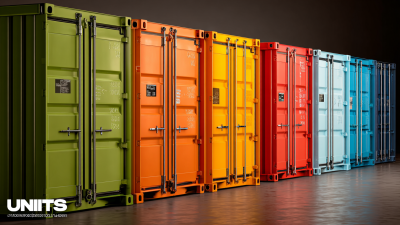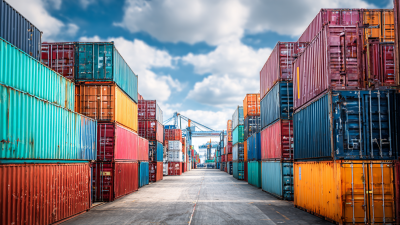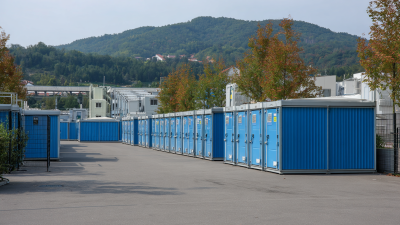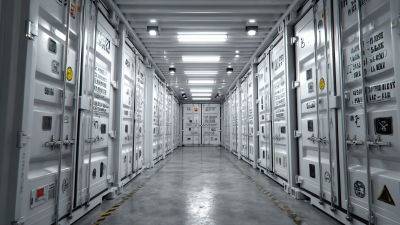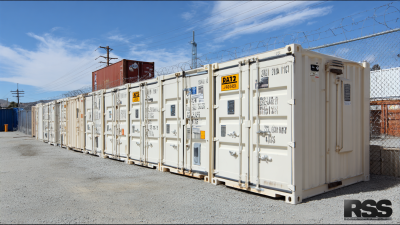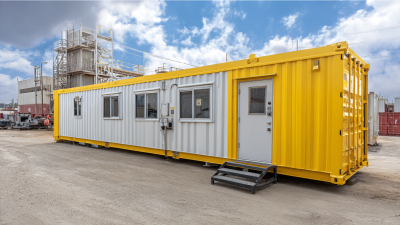In today's fast-paced world, the choice of storage solutions can significantly impact both personal and business budgets. With a variety of options available, understanding the nuances of storage container cost becomes essential for making informed decisions. This blog will delve into the factors influencing the costs associated with different types of storage containers, ranging from traditional shipping containers to modern modular units. By comparing features, durability, and pricing structures, readers will gain valuable insights into which storage solution best fits their needs and financial constraints. Whether you are considering a one-time rental or a long-term investment, this comprehensive analysis will guide you through the complexities of storage container costs, ensuring you make the best choice for your situation.

When considering storage solutions, understanding the various types of storage containers and their associated costs is essential for making an informed decision. There are several common types of storage containers, including portable storage units, shipping containers, and traditional self-storage units. Each type has its unique benefits and price points. For instance, according to a report from the Self Storage Association, the average monthly cost of a self-storage unit in the U.S. is about $120, while portable storage units typically range from $150 to $250 depending on the size and location.
Moreover, shipping containers have gained popularity as an alternative storage solution, especially for accommodating larger volumes of goods. The cost of purchasing a used 20-foot shipping container can range from $2,000 to $5,000, depending on its condition and market demand, as reported by ContainerAuction. This makes shipping containers a cost-effective option for long-term storage, particularly for businesses looking to optimize storage space without recurring rental costs. Understanding these differences in cost can significantly influence whether a business or individual opts for one type of storage over another, ultimately impacting their overall budget and space management strategy.
This chart compares the average costs of various types of storage containers, providing insights into their pricing for effective decision-making.
When examining the pricing of storage containers in the market, several key factors come into play. Materials, size, and duration of rental are primary influences. According to a report by the Self Storage Association, the average cost of a standard 20-foot shipping container can range from $2,000 to $5,000, depending heavily on material quality and conditions. Containers made from Corten steel, renowned for its durability and corrosion resistance, tend to sit at the higher end of the pricing spectrum.
Additionally, market demand significantly sways container costs. For instance, during peak moving seasons, prices can spike by as much as 20%. Furthermore, geographical variations contribute to price disparities; containers in coastal regions may be cheaper due to proximity to ports, while those in landlocked areas could incur additional transportation fees.
Tips: When considering a storage container, assess your requirements and budget carefully. Opting for a long-term rental can often yield substantial savings. Additionally, researching local suppliers might provide competitive prices that help avoid unnecessary overhead costs. Exploring options for used containers can also deliver significant savings without compromising quality.

When considering storage solutions, one of the most critical decisions revolves around choosing between renting or purchasing storage containers. Rental prices for a standard 20ft container can vary significantly based on location, duration of use, and the specific service providers in the area. Reports indicate that while renting might seem cost-effective for short-term needs, the cumulative expenses can outweigh the initial savings when evaluated over a longer term. Some estimates suggest that businesses could save upwards of 30% by opting to purchase containers instead, especially if they require long-term storage.
Tip: To make an informed decision, analyze the frequency and duration of your storage needs. If you anticipate using the container regularly for over a year, purchasing may be more economically viable than renting.
On the other hand, purchasing a storage container entails upfront costs, which can be a barrier for some. However, it's important to factor in the long-term benefits, such as depreciation and resale value. Industry reports note that well-maintained containers can retain significant value, often providing an advantageous return on investment after a few years.
Tip: Consider financing options or used container purchases to mitigate the initial expenditure and keep your budget intact while still securing a long-term storage solution.
When it comes to storage containers, one of the significant factors influencing costs is geographic location. According to a recent report by the International Maritime Organization, prices for storage containers can vary dramatically based on regional demand and supply dynamics. For instance, metropolitan areas with high population densities, such as New York and Los Angeles, often see prices rise by as much as 20-30% compared to rural regions. This disparity can be attributed to increased transportation costs and higher demand driven by nearby businesses.
Furthermore, a survey conducted by Container Technology Research indicates that northern states, particularly during winter months, face elevated storage container prices due to harsher weather conditions affecting availability and transport logistics. In contrast, southeastern regions tend to offer more competitive pricing year-round, with costs typically 15% lower than the national average. This can be vital for businesses and individuals looking to store items in locations that are not only affordable but also logistically sensible. Understanding these regional price variations is crucial for making informed decisions about storage container needs.

When it comes to optimizing costs for storage solutions, understanding the nuances of various container types is crucial. With the rise of diverse storage technologies, from traditional options to innovative energy solutions, consumers must navigate a landscape of pricing and functionality. Choosing the right storage solution isn't solely about upfront costs; it involves considering long-term expenses and resource efficiencies.
One effective strategy is to assess the total cost of ownership (TCO), which incorporates not just the initial purchase price but also maintenance, operational costs, and expected lifespan. For instance, while certain containers may appear cheaper upfront, their durability and efficiency could lead to higher costs over time. Additionally, keeping abreast of emerging trends, such as energy storage technologies, can inform smarter choices that align with future needs and sustainability goals.
In 2025, as economic dynamics shift, agility in decision-making becomes paramount. Implementing a comparative analysis approach—looking at different storage solutions side by side—can unveil hidden savings and improve overall value. Consider leveraging pricing calculators and cost optimization strategies to make informed decisions that withstand the test of time and market fluctuations.
